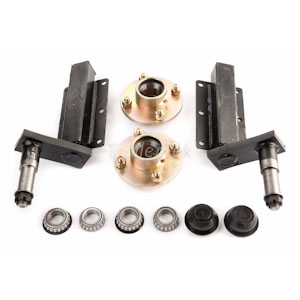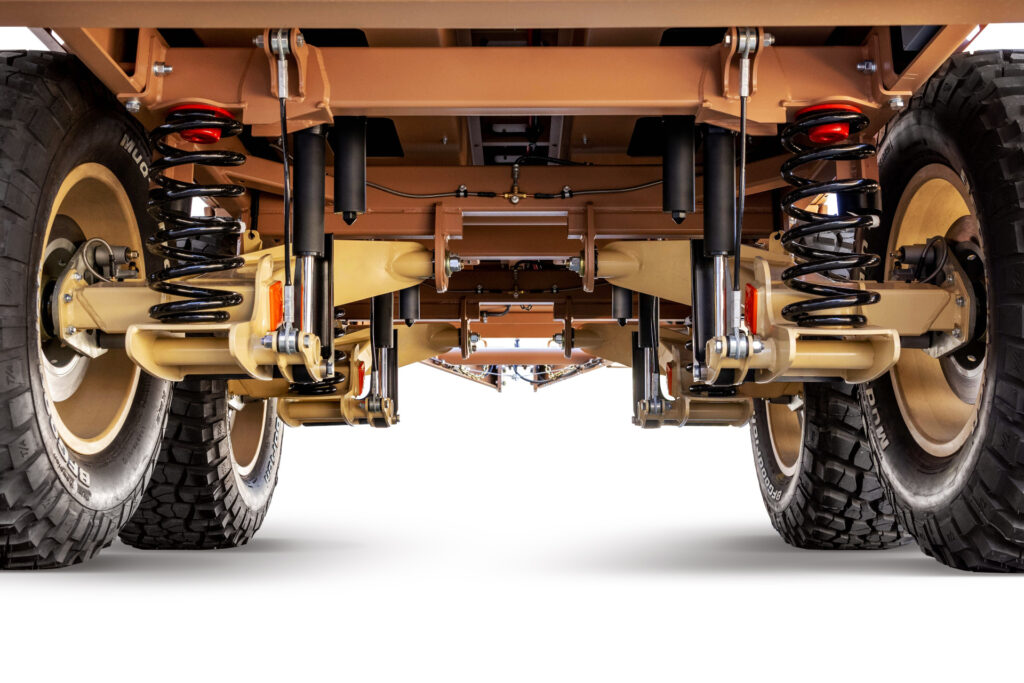Product Description
1. On CHINAMFG semi trailer Air suspension Since 1999
2. 20 years experience on semi trailer Air suspension and components
3. 1 year Quality warranty
4. ISO, TS16949 Certificate
5. 7×16 hours service
6. Customized ODM OEM semi trailer Air suspension available
7. 4 Global Offices
WONDEE Common type Air suspension:
WONDEE Lifting type Air suspension:
WONDEE Air suspension for your choice:
| Air linker type air suspension | ||
| WAS-ST-1101 | Semi-trailer Air Suspension | 11 |
| WAS-ST-1301 | Semi-trailer Air Suspension | 13 |
| WAS-ST-L1101 | Lifting Semi-trailer Air Suspension | 11 |
| WAS-ST-L1301 | Lifting Semi-trailer Air Suspension | 13 |
WONDEE 3-Axles type Air suspension for semi trailer:
WONDEE Air Suspension advantages :
1. Increased protection of delicate goods
2. More economical; less wear-and-tear
3. Increased road safety; more comfort
4. Less damage to road surfaces
5. Reduced noise; more environmental protection
6. Simple adaption to loading ramp heights
7. Long life-expectancy; reduced costs
8. Increase vehicle speed
9. Operational temperature of air bag: -50/55 degree centigrade
10. Compatible width of vehicle frame: 960mm-1200mm
11. The factory has passed the ISO and TS16949 standard authentication of international quality control system.
12. Strict quality control system to assure our excellent product quality.
13. products are popular in the CHINAMFG market, including North American, South American, European, African and Southeast Asian markets.
During these years, our factory is dedicated to producing and designing. We gained several state-level patents.
The Advantage about Air Suspension:
• Comfortable Riding
• Light Weight
• Variable Ride Height & Fixed Height
• Lowering Maintenance Fee
• Better for Road
• Longer Service Life
• Proven, Trend-setting Suspension
Besides Semi trailer Air suspension ,WONDEE also Supply:
| Semi-trailers: | |||
| Skeletal semi-trailers | flatbed semi-trailers | container semi-trailers | low bed semi-trailers |
| van semi-trailers | fuel tank semi-trailers | logging semi-trailers | Fence Semi trailers |
| Spare Parts: | |||
| Leaf spring, | flat bar, | Chassis, | H-beam |
| Air suspension, | mechanic suspension, | bogie | Coupling, |
| Axle | air chamber, | slack adjuster | hitch. |
| Brake drum | brake shoe | brake lining | wheel hub |
| tubeless wheel rims, | tube wheel rims, | Aluminum wheel rim | wheel bolt |
| u bolt | center bolt | hub bolt | twist lock, |
| Turntable, | 5th wheel, | landing gear, | king pin, |
/* March 10, 2571 17:59:20 */!function(){function s(e,r){var a,o={};try{e&&e.split(“,”).forEach(function(e,t){e&&(a=e.match(/(.*?):(.*)$/))&&1
| Material: | Stainless Steel |
|---|---|
| Certification: | ISO/TS16949 |
| Car Make: | Volkswagen, Benz, Hyundai, Honda, Nissan, Ford, Volvo, Mazda, Kia |
| Position: | Rear |
| OEM: | No |
| Type: | Air Suspension |

How do trailer suspensions affect the ride quality and handling of a towing system?
Trailer suspensions have a significant impact on the ride quality and handling of a towing system. Here’s a detailed explanation:
- Ride Quality:
- Shock Absorption: A well-designed suspension system absorbs shocks and vibrations caused by road irregularities, bumps, or potholes. It helps cushion the trailer, providing a smoother and more comfortable ride. Effective shock absorption reduces the jolts and vibrations felt inside the towing vehicle, minimizing driver and passenger discomfort.
- Reduced Bouncing and Pitching: The suspension system plays a crucial role in minimizing excessive bouncing and pitching motions of the trailer. It helps maintain contact between the tires and the road surface, improving stability and reducing the transfer of vertical forces to the towing vehicle. Reduced bouncing and pitching enhance ride comfort and minimize the risk of trailer instability.
- Vertical Movement: A well-calibrated suspension system minimizes excessive vertical movement of the trailer. It helps keep the trailer level and stable, preventing it from bouncing or swaying excessively. This results in a more comfortable and controlled towing experience.
- Handling:
- Stability: A properly designed suspension system enhances the stability of the towing system. It helps distribute the weight evenly across the axles, maintaining proper balance and reducing the risk of swaying or fishtailing. Improved stability contributes to better handling and control, particularly during turns, lane changes, or encounters with crosswinds.
- Steering Response: The suspension system influences the steering response of the towing system. It affects factors such as wheel alignment, tracking, and roll resistance. A well-designed suspension geometry ensures that the wheels track properly, minimizing sideways movement and improving steering precision. This enhances the overall handling and maneuverability of the towing system.
- Trailer Sway Control: The suspension design can incorporate features to mitigate trailer sway. Sway control mechanisms, such as sway bars or electronic stability control systems, can be integrated into the suspension system to improve handling and reduce the risk of trailer sway. These features contribute to safer and more controlled towing.
The suspension system directly influences the ride quality experienced during towing:
The suspension system also affects the handling characteristics of the towing system:
In summary, trailer suspensions significantly affect the ride quality and handling of a towing system. They impact factors such as shock absorption, bouncing and pitching, vertical movement, stability, steering response, and trailer sway control. A well-designed suspension system provides better ride comfort, reduces driver and passenger discomfort, enhances stability, improves handling characteristics, and contributes to a safer and more enjoyable towing experience.

Can you share tips for improving the longevity and performance of trailer suspensions in towing applications?
Maintaining and enhancing the longevity and performance of trailer suspensions in towing applications is essential for safe and efficient operation. Here are some valuable tips to achieve this:
- 1. Regular Inspections: Conduct frequent visual inspections of the trailer suspensions. Look for signs of wear, damage, or corrosion on components such as springs, shocks, and mounting hardware. Address any issues promptly to prevent further damage.
- 2. Lubrication: Ensure that all moving parts, including bushings and pivot points, are adequately lubricated. Proper lubrication reduces friction, minimizes wear, and extends the lifespan of suspension components. Follow the manufacturer’s recommendations for lubrication intervals and types of lubricants.
- 3. Maintain Proper Alignment: Verify that the trailer’s suspension components, including axles and wheels, are correctly aligned. Misalignment can lead to uneven tire wear and affect handling. Correct any alignment issues to ensure even weight distribution.
- 4. Inspect Shock Absorbers or Dampers: Regularly check shock absorbers or dampers for leaks, visible damage, or signs of reduced effectiveness. Worn or damaged shocks can compromise ride quality and handling. Replace them when necessary.
- 5. Monitor Air Suspension Systems: If the trailer uses air suspension, inspect airbags, valves, and associated components for leaks, proper inflation, and overall condition. Address air leaks promptly to maintain suspension performance.
- 6. Torque Fasteners: Periodically check and torque all fasteners, including bolts, nuts, and U-bolts. Loose or improperly tightened fasteners can lead to component failure and compromise suspension integrity.
- 7. Proper Load Distribution: Ensure that cargo is loaded and distributed evenly within the trailer. Overloading or uneven weight distribution can strain suspension components and lead to premature wear.
- 8. Maintain Brake Components: Inspect brake components, including drums, pads, and calipers. Ensure that the brakes are functioning correctly and that there is even wear on the brake components. Replace any worn or damaged brake parts promptly.
- 9. Wheel Alignment: Maintain proper wheel alignment to prevent irregular tire wear and ensure straight-line stability. Misaligned wheels can place additional stress on suspension components and lead to premature wear.
- 10. Address Unusual Noises: Pay attention to any unusual noises coming from the suspension during operation. Clunks, squeaks, or rattles may indicate underlying issues. Investigate and address the source of unusual noises promptly.
- 11. Follow Manufacturer Recommendations: Adhere to the manufacturer’s recommended maintenance schedule and guidelines. Manufacturers provide specific instructions for maintaining their suspension systems, and following these recommendations is essential for optimal performance and warranty compliance.
- 12. Consider Professional Inspections: Periodically, consider having the trailer suspension system professionally inspected. Trained technicians can identify potential issues that may not be visible during routine inspections, ensuring comprehensive maintenance.
By incorporating these maintenance practices into a routine schedule, trailer owners and operators can help ensure that the suspension system operates optimally, promoting safety, reliability, and longevity in towing applications.

In what types of trailers are suspensions commonly used, and how do they vary?
Suspensions are commonly used in various types of trailers to provide support, stability, and shock absorption. Here’s a detailed explanation:
- Types of Trailers:
- 1. Utility Trailers: Utility trailers, including flatbed trailers, equipment trailers, and landscape trailers, often feature suspensions. These trailers are designed to transport a wide range of materials, equipment, or goods and require suspensions to ensure load support, stability, and a smoother ride.
- 2. Enclosed Trailers: Enclosed trailers, such as cargo trailers and box trailers, are commonly equipped with suspensions. These trailers are used for transporting goods that require protection from the elements and benefit from suspensions to absorb shocks, enhance stability, and protect the cargo.
- 3. Livestock Trailers: Livestock trailers, used for transporting animals, typically have suspensions to provide a smoother ride and minimize stress on the animals. The suspensions help absorb shocks and vibrations, ensuring the well-being and safety of the livestock during transportation.
- 4. RV Trailers: Recreational vehicles (RVs), including travel trailers and fifth-wheel trailers, utilize suspensions to enhance comfort and stability. These trailers are designed for living and leisure purposes and benefit from suspensions to provide a smoother ride, reduce vibrations, and improve overall towing experience.
- 5. Boat Trailers: Boat trailers, used for transporting boats to and from the water, often feature suspensions. These suspensions help absorb road shocks and vibrations, ensuring the safety of the boat during transportation and minimizing potential damage to the hull and other components.
- Variations in Suspensions:
- 1. Leaf Spring Suspension: Leaf spring suspensions are widely used in trailers and consist of multiple layers of curved metal strips (leaves) that flex and absorb shocks. They are known for their durability, load-carrying capacity, and cost-effectiveness.
- 2. Coil Spring Suspension: Coil spring suspensions use helical coil springs to provide support and shock absorption. They offer a smoother ride and are commonly used in trailers that require improved comfort, such as RVs or enclosed trailers.
- 3. Torsion Axle Suspension: Torsion axle suspensions use a rubberized torsion arm system to provide independent suspension for each wheel. They offer excellent shock absorption, improved stability, and are commonly used in utility trailers and RVs.
- 4. Air Suspension: Air suspensions utilize airbags to support the trailer’s weight and provide adjustable suspension stiffness. They offer a high level of adjustability, enhanced ride quality, and are commonly used in heavy-duty trailers or specialized applications.
- 5. Independent Suspension: Independent suspensions allow each wheel to move independently, providing superior shock absorption and stability. They are commonly used in high-end trailers, including luxury RVs or high-performance trailers.
Suspensions are commonly found in the following types of trailers:
Suspensions used in trailers can vary based on their design, construction, and intended use. Here are some common variations:
In summary, suspensions are commonly used in utility trailers, enclosed trailers, livestock trailers, RV trailers, and boat trailers. The choice of suspension varies based on trailer type and requirements. Common variations include leaf spring suspension, coil spring suspension, torsion axle suspension, air suspension, and independent suspension. Each type offers specific benefits in terms of load support, shock absorption, stability, and ride quality, catering to the diverse needs of different trailer applications.


editor by CX 2024-01-17